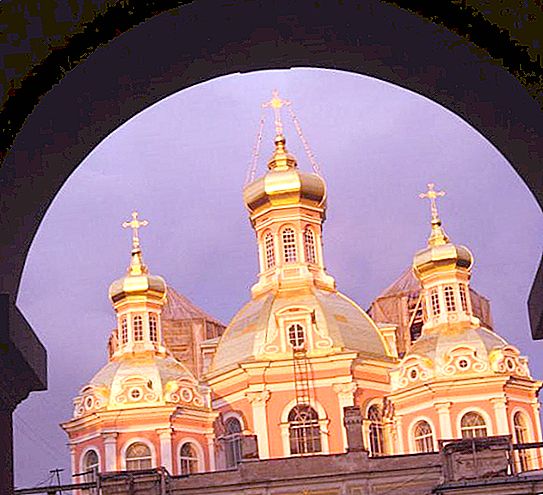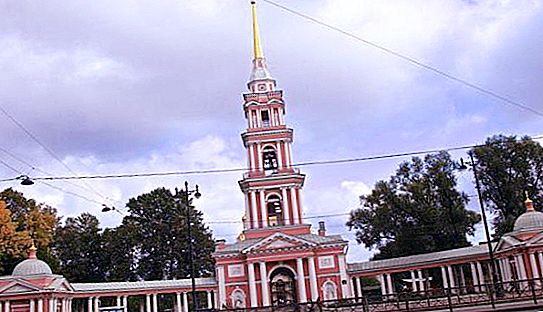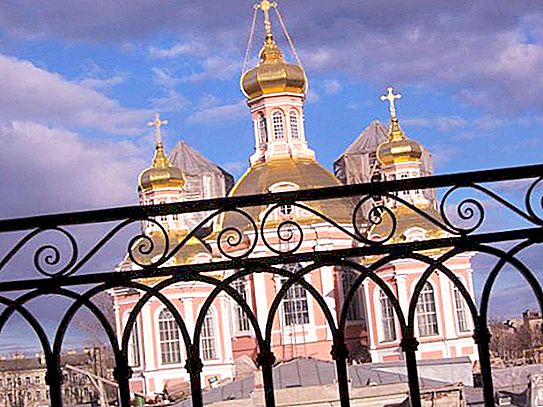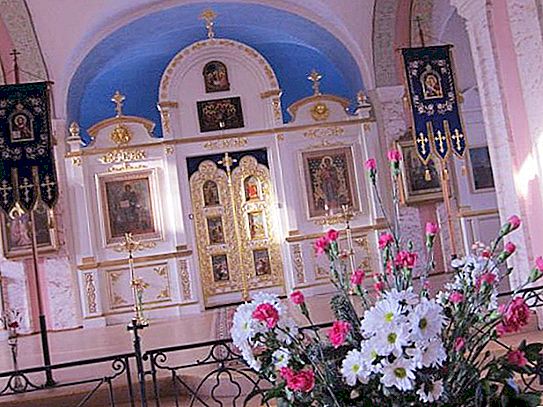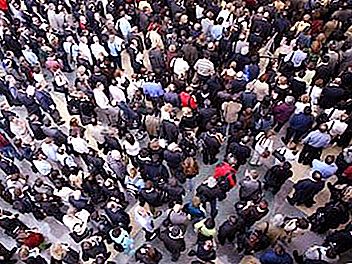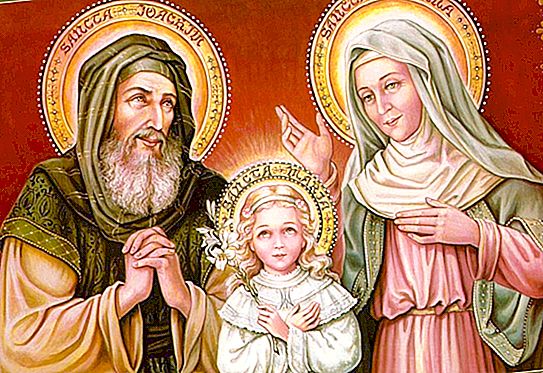The Holy Cross Exaltation Cossack Cathedral on Ligovsky Prospect began its history with St. Petersburg and is one of the oldest churches in the city.
The same age as St. Petersburg
At the dawn of the construction of St. Petersburg, the current Ligovsky Prospect was called the Novgorod Highway. It was a busy road connecting the new city with all of Russia, there were no other ways. On the orders of Peter I, coachmen were sent from Moscow to Petersburg for further work. Like any working people, they settled in one place, forming the Yamskaya Sloboda on the banks of the Black River (Ligovaya), not far from the Novgorod road. Soon, near the settlement, one of the first cemeteries in St. Petersburg was formed.
The Yamschitsky estate did not have its own church, and therefore it was decided to build a small chapel in the cemetery. The names of some builders of the wooden church - Vasily Fedotov, Pyotr Kusov and their comrades - have been preserved. The temple was built in the spirit of Peter's architecture in 1718, and consecrated in honor of the birth of John the Baptist in 1719. The bell tower was added to the church in 1723, it was equipped with four bells taken from the cannon yard, where they had previously been sent for remelting to weapons by decree of the king.
The wooden temple did not last long, in 1730 it completely burned out. A year later, a chapel was built in the same place. It was bought at the Okhta plant and assembled in a new place, in the same year it was consecrated, giving the status of a church. By 1734, the Nikolsky side chapel was added, which since 1743 was used by the Life Guards Cuirassier Regiment.
Stone temple
The Holy Cross Exaltation Cossack Cathedral (on Ligovsky pr.) Has several previous churches. When in 1740 it became clear that the church needed repair and renovation, parishioners and the clergy of the church turned to the church administration with a request to build a stone church.
The new one-story church was consecrated in the summer in 1748 in honor of the Exaltation of the Holy Cross. The northern aisle is dedicated to St. Nicholas, and the western - to St. John the Baptist. A bell tower rose above the western vestibule of the temple. There was no heating in the church, which made it difficult to serve in the cold season. This served as a reason for a new appeal to the Holy Synod, the clergy asked to build a warm winter church on the site of a dilapidated wooden church, and his request was granted.
Tikhvin Church
Holy Cross Cathedral (St. Petersburg) at the end of the 18th century only began to get its shape. The construction of the warm temple, for the most part, was financed by the merchant I. Ilyin. The foundation of the Tikhvin temple was made behind the altar of the Holy Cross Church in 1764. Both churches were almost identical in their architecture.
The Tikhvin Church was consecrated in December 1768. In 1800, the chapel in the name of John Chrysostom was consecrated, the patron of the construction of which was the merchant I.I. Menshoy. Another chapel was annexed in 1861, it was consecrated in honor of Prince Alexander Nevsky.
Bell tower and rebuilding of temples
The Holy Cross Exaltation Cossack Cathedral (on Ligovsky pr.) Received the bell tower in 1812. The bell tower complex included two chapels, sculptures of the Apostles Peter and Paul are located in niches. Its height reaches almost 60 meters. In the upper part there are plaster images of the eight Apostles; in the lower part, images of the four Apostles serve as decoration. The third tier of the bell tower served as the location of the twelve bells.
In 1872, under the arches of the bell tower, through the efforts of the merchant Shigalev in memory of the deceased wife, a church was built in honor of Saints Cyril and Methodius. It was consecrated in 1878. Almost a century after construction, the Holy Cross Church and the Tikhvin Church required repair. According to the project of the architect V. Morgan, perestroika was supposed to combine both buildings and become an analogue of St. Isaac's Cathedral, the capacity of the new church implied a joint stay of 2500 people.
The project was not implemented for one reason - the area where the churches stood has long ceased to be an outskirts, many parishioners lived here, and it was impossible to leave them without a church. At the first stage, the Tikhvin Church underwent expansion, as a result of the work it became wider by almost nine meters, the length increased due to the porch, arches appeared in the walls. Also, utility rooms were added - the gatehouse, sacristy. After the reconstruction of the Tikhvin temple, there was no money left to finance the next stage of construction work, so they preferred to get permission to build a new cathedral.
The new Holy Cross Exaltation Cossack Cathedral (on Ligovsky Prospect) began to be built in the spring of 1848, the interior finishing work was completed in the winter of 1851, it was consecrated in honor of the Exaltation of the Holy Cross of the Lord in early December 1851. The side chapel of the Nativity of St. John the Baptist was consecrated in June 1852, the second side chapel, in honor of Nicholas the Wonderworker, was consecrated on June 8.
After the revolution
The Cossack Holy Cross Cathedral received its full name thanks to the Life Guards and Ataman regiments in the 19th century. Most of the military of these regiments came from Cossack families and preferred the temple of the Tikhvin Icon of the Mother of God or the Cross Exaltation Church to all the churches of St. Petersburg.
After the events of 1917, both temples for some time operated within the traditional framework. The Tikhvin Church was closed in 1932, and the premises were given for the construction of the school, and in the forties under the vaults of the former church there were workshops of a radio technical college. Cyril and Methodius Church ceased operation in 1938. During this period, the threat of destruction hung over the Tikhvin Church, according to the deputy decision of the Leningrad City Council. The situation saved the appeal of the Leningrad branch of Soyuzprokat to transfer the church for use as a film storage, the request was granted.
During the war, the temple was partially destroyed by an artillery shell. During the siege winter, the dead Leningraders were brought to the church; their bodies were buried in the Volkovsky cemetery in the spring.
Rebirth
The Cossack Holy Cross Cathedral was returned to the Russian Orthodox Church in 1991. The first cross was mounted on the ancient bell tower three weeks after the church was handed over to the parishioners, and a general prayer service was held in the church of Cyril and Methodius on May 24, 1991. By the time of the transfer, the churches were in poor condition: the dome was dismantled, the interior was divided into two floors, where heavy industrial machines stood, and the outer walls had long required new plastering.
The cleaning and the first stage of restoration were completed by the Trinity Day in 1993, at the same time the first temple service was performed. The patron of all works was Yu.L. Petrov, thanks to his participation, the Holy Cross Exaltation Cossack Cathedral on Ligovsky Ave. was reopened. The history of the temple totals almost three hundred years and many shocks, but today it serves as a consolation to many people and also bears its purpose.
